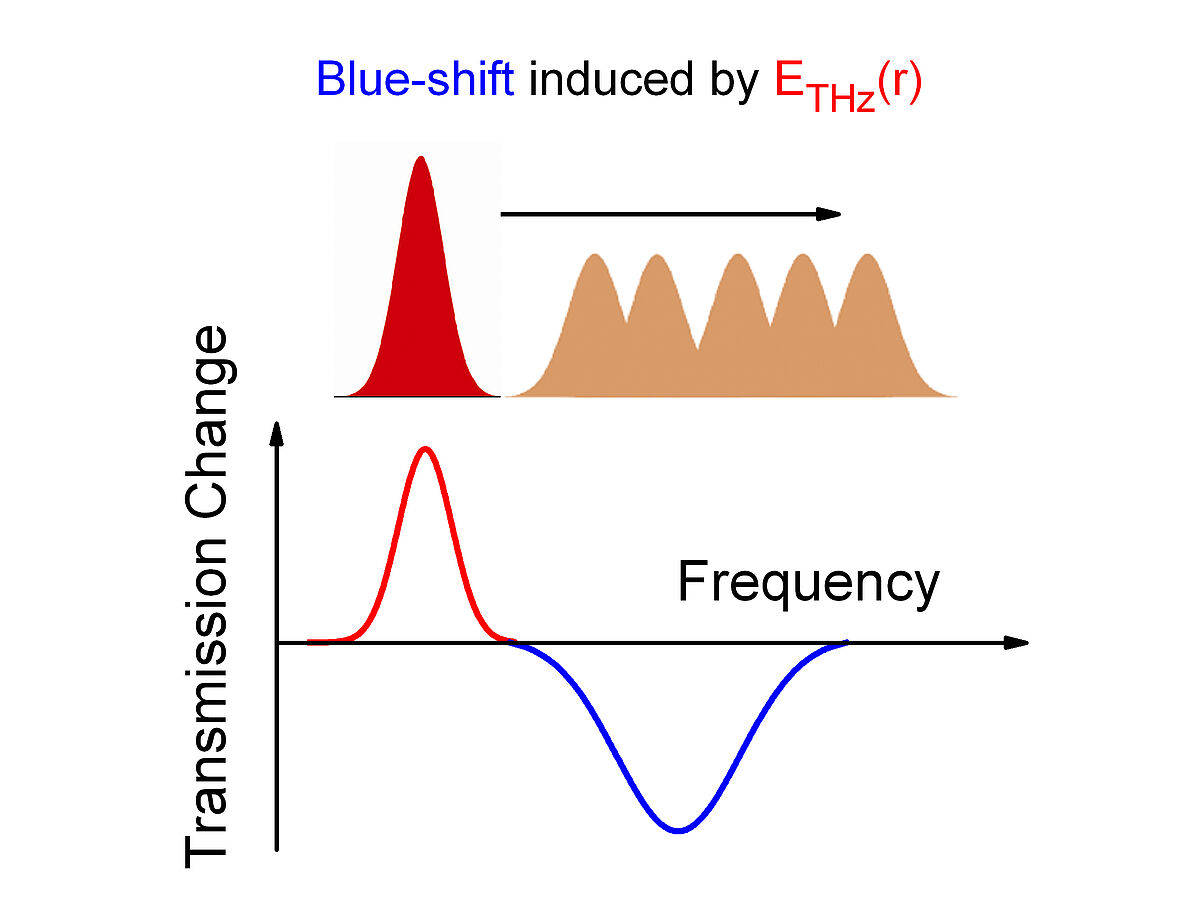Aspirin in form of small crystallites provides new insight into delicate motions of electrons and atomic nuclei. Set into molecular vibration by strong ultrashort far-infrared (terahertz) pulses, the nuclei oscillate much faster than for weak excitation. They gradually return to their intrinsic oscillation frequency, in parallel to the picosecond decay of electronic motions. An analysis of the terahertz waves radiated from the moving particles by in-depth theory reveals the strongly coupled character of electron and nuclear dynamics characteristic for a large class of molecular materials.
Based on its physiological activity, aspirin has found widespread pharmaceutical application in different medical areas. Looking at an individual aspirin molecule from the physics perspective, one can distinguish two types of motions: (i) molecular vibrations, i.e., oscillatory motions of the atomic nuclei in a wide frequency range, among them, e.g., the hindered rotation of the methyl group at a frequency of 6 terahertz (THz) (1 THz = 1,000,000,000,000 oscillation cycles per second) and (ii) oscillatory motions of electrons in the molecule around 1000 THz, as induced, e.g., by ultraviolet light. While the different motions are only weakly coupled in a single aspirin molecule, they develop a very strong electric interaction in a dense molecular packaging such as in the aspirin tablets from the pharmacy. As a result, the character of particular vibrations, the so-called soft modes, changes and their oscillation frequency is substantially reduced. This complex coupling scheme and the resulting molecular dynamics are important for how aspirin and other molecules respond to an external stimulus. So far, this problem has remained unresolved.
In the current issue of Physical Review Letters, researchers from the Max Born Institute in Berlin and the University of Luxembourg combine top-notch experimental and theoretical methods to unravel the basic properties of soft modes. In the experiments, a sequence of two phase-locked THz pulses interacts with a 700-μm thick tablet of polycrystalline aspirin. The electric field radiated by the moving atoms serves as a probe for mapping the soft-mode oscillations in real time. Two-dimensional scans in which the time delay between the two THz pulses is varied, display a strong nonlinearity of the soft-mode response in aspirin crystals. This nonlinearity is dominated by a pronounced transient shift of the soft mode to higher frequencies (Fig. 1). The response displays a non-instantaneous character with picosecond decay times originating from the generated electric polarization of the crystallites. During the polarization decay, the soft-mode frequency returns gradually to the value it had before excitation.
The theoretical analysis shows that strong electric polarizations in the ensemble of aspirin molecules give the soft mode a hybrid character, combining nuclear and electronic degrees of freedom via dipole-dipole coupling. In the unexcited aspirin crystallites, this correlation between electrons and nuclei determines the soft-mode frequency. Strong THz excitation induces a break-up of the correlations, resulting in a transient blue-shift of the soft modes and, via the comparably slow decay (decoherence) of the polarization, a non-instantaneous response. The scenario discovered here is relevant for a large class of molecular materials, in particular for those with applications in ferroelectrics.
Fig. 1: Blue shift induced by the THz electric field acting on soft-mode transition dipole in an aspirin crystal. Depending on the electric field strength the soft-mode frequency is shifted from its initial value (red Gaussian, transmission increase) to an instantaneously blue-shifted position (ensemble of orange Gaussians, transmission decrease).
Original publication:
Physical Review Letters 119, 097404 (2017)
Strong Local-Field Enhancement of the Nonlinear Soft-Mode Response in a Molecular Crystal
Giulia Folpini, Klaus Reimann, Michael Woerner, Thomas Elsaesser, Johannes Hoja, and Alexandre Tkatchenko
Contact
| Dr. Michael Woerner Tel. 030 6392 1470 Giulia Folpini Tel. 030 6392 1474 Prof. Dr. Klaus Reimann Tel. 030 6392 1476 Prof. Dr. Thomas Elsaesser Tel. 030 6392 1400 |


